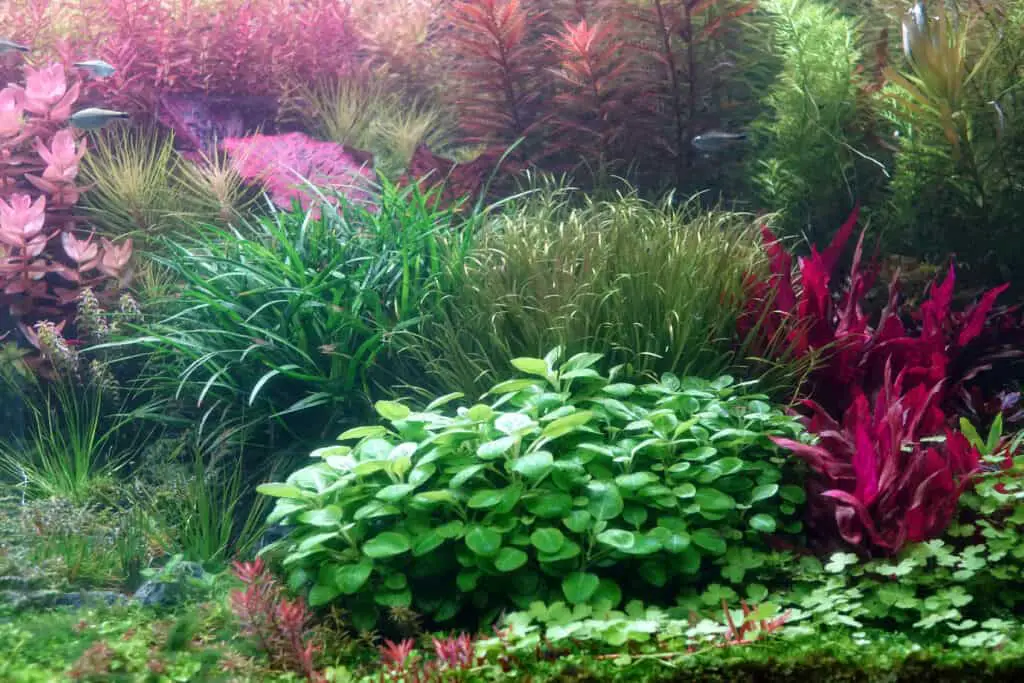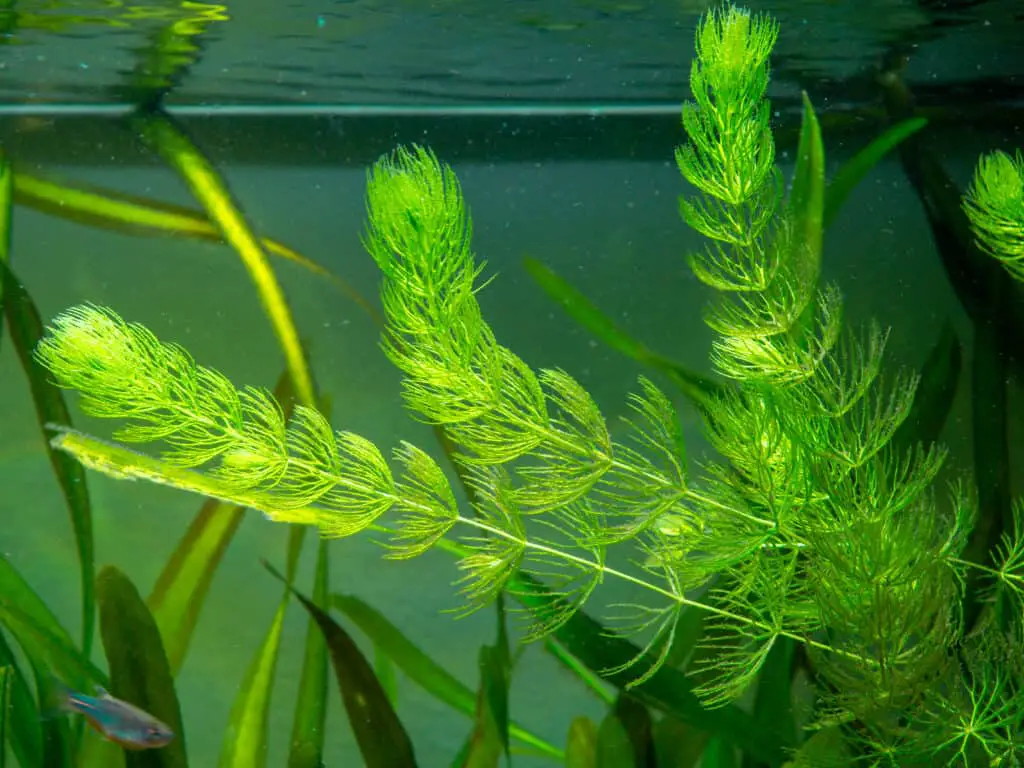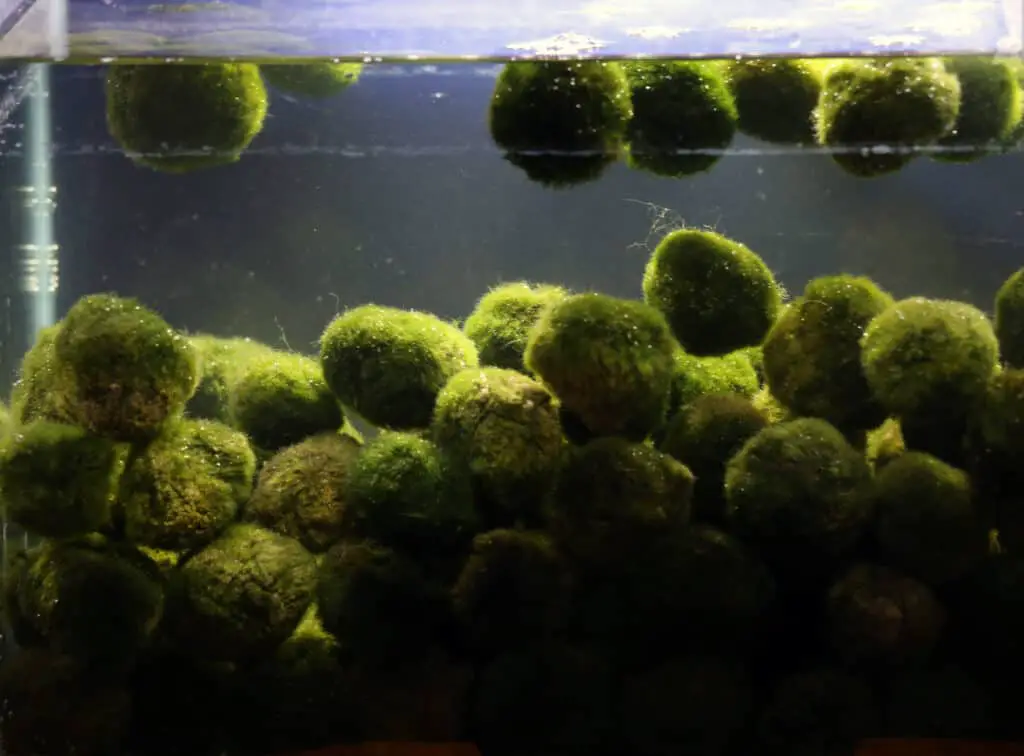
For many aquarists, especially those new to the hobby or planted tanks, adding and choosing plants for their tanks can be daunting.
This is where hardy aquarium plants come into play, providing beginners the opportunity to get experience with live aquarium plants while increasing their chances of success by having these nearly bulletproof additions.
Hardy aquarium plants are known for being able to adapt and thrive in a variety of tank parameters, including the tank’s water conditions, and light conditions.
They will also require little to no added supplements like fertilizers and CO2 to survive, however, they will still greatly benefit from them.
Let’s take a look at seven of the hardest plants available to aquarists that will be perfect for beginners, and fish hobbyists simply looking for extremely forgiving and easy-to-care-for plants.

Anubias: The Low Light Lover
Anubias is considered one of the best plants for low-light setups, and being extremely easy to take care of is perfect for beginners.
This plant has a known resilience to algae, which is a common issue in many aquariums, especially beginner tanks.
The one important thing to remember with Anubias is that it would prefer to be attached to rocks, driftwood, or decorations which can be done with string, or aquarium-safe glue.
Burying it directly into the substrate could induce root rot, making the plant not survive.
Java Fern: The Hardy Classic
Java Fern is a staple among all fish tank hobbyists, as it comes with a unique and long leaf shape and extremely hardy nature.
This plant is excellent at adapting to many tank environments, being able to survive in a wide range of water parameters, from low to high lighting and varying pH levels.
Like Anubias, Java Fern would rather be attached to rock and driftwood, and its roots will then eventually anchor itself which will give your tank an added natural look.

Amazon Sword: The Statement Plant
If you have a larger tank or are looking for a hardy statement plant, then look no further than the Amazon Sword.
This plant can grow quite large, backing it perfectly for a backdrop plant, and something that can give any tank some depth.
The Amazon Sword will also be an excellent source of shelter for all of your tank inhabitants while also giving your tank that statement piece.
Cryptocoryne: The Versatile Beauty
Cryptocorynes, commonly referred to as ‘Crypts’ are especially known for their various colors and patterns on the leaves.
They are super versatile and hardy, adapting to nearly all water parameters and environments.
When first planted, they will go through a process known as ‘crypt melt’, simply the process of converting the plant to be a fully submerged plant.
This process can also happen to other plants and is due to the plants being grown initially emersed, meaning the leaves were fully out of the water.
As the plant fully converts new leaves will grow, typically with a different look, to learn more on how to help reduce this read my article here.
Once fully acclimated however they will be one of the most bulletproof plants.
They are best suited to be planted in the substrate, and they can easily be propagated, making them a great candidate for creating a full and natural underwater landscape.

Hornwort: The Oxygenator
A plant that has very fine needle leaves that have a slightly bumpy texture is sure to give a unique appearance to your tank.
Hornwort is a plant that can be both planted in the substrate or left out of the substrate as a floating plant.
It can be found on every continent except for Antarctica, making it extremely robust, being able to survive in almost any environment.
However, it does best as a floating plant where it has more access to light and nutrients.
Hornwort can also help alert you if a major water parameter has changed as you may notice it shedding its needle leaves.
This is an extremely fast-growing plant that could fill up a space in no time.
In the right conditions, it could grow up to 4 inches a week.
Because of its fast-growing nature, it would do best as a background plant for the majority of tanks.
Dwarf Sagittaria: The Carpet Creator
If the vision is to create a plant carpeting effect, where the ground of your aquarium looks like grass, the Dwarf Sagittaria may be what you are looking for.
This grass-like plant will spread across the substrate, making it perfect for a green carpet look.
It is also very hardy, and rather easy to care for, only needing moderate light and a regular supply of nutrients.
It will be the perfect addition to provide your tank with added depth and texture for your aquarium’s foreground.

Marimo Moss Ball: The Unique Addition
A super hardy plant that will add a unique touch to your aquarium, look no further than the Marimo moss ball.
This plant is a ball of algae that is both interesting and extremely easy to take care of.
It will work in any tank, doing well in even low-light situations and tanks with limited water circulation.
Being extremely easy to take care of, this small plant only really requires two things to thrive, the first being during water changes to roll the ball in your hands to help keep its spherical shape, and the other is to occasionally turn it over so that all areas of the moss ball will receive even light exposure
Final Thoughts
For new to experienced aquarists, adding a hardy plant can not only provide extra benefits that plants give a tank but can do it while not adding much complication and work.
These hardy plants provide a greater success rate as they can be easily adapted to most tank conditions and survive without much upkeep.
However, like any plant, they will also benefit from added care and additional resources like fertilizer.
If you want to learn more about how often you should be giving your plants fertilizer to help them grow even better, take a look at my article here.
